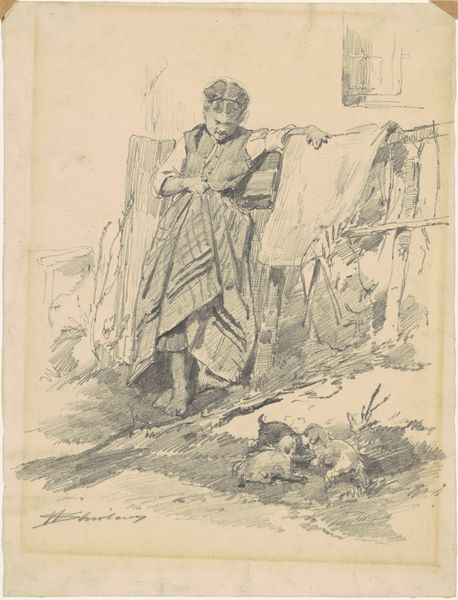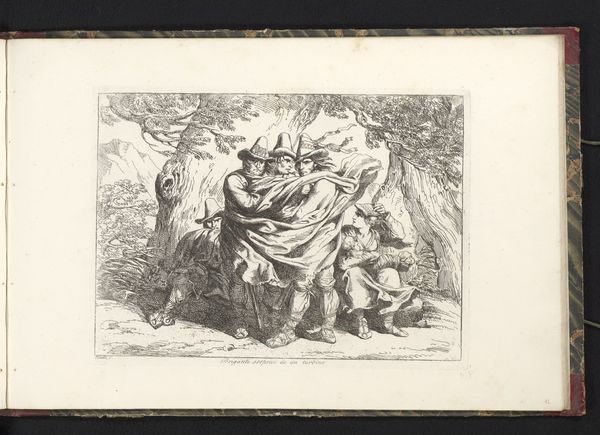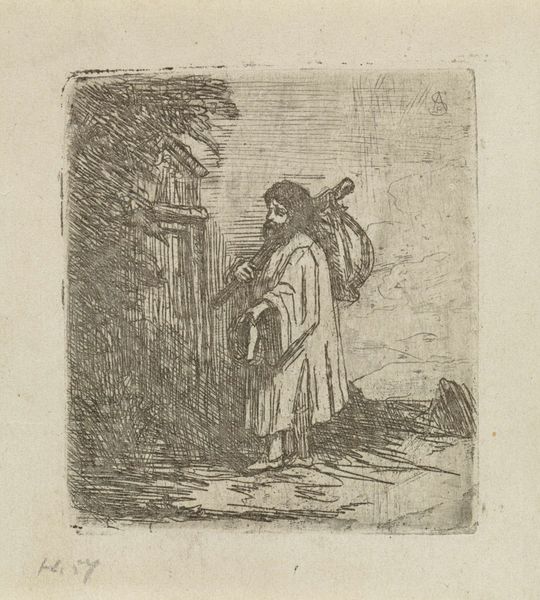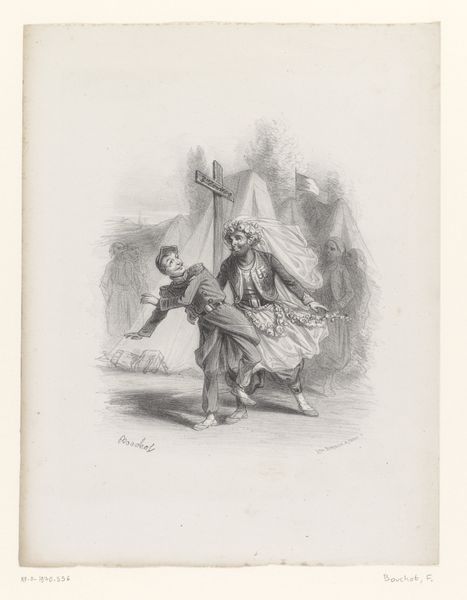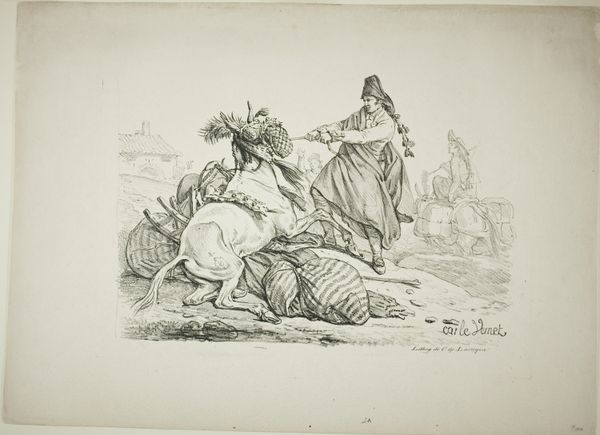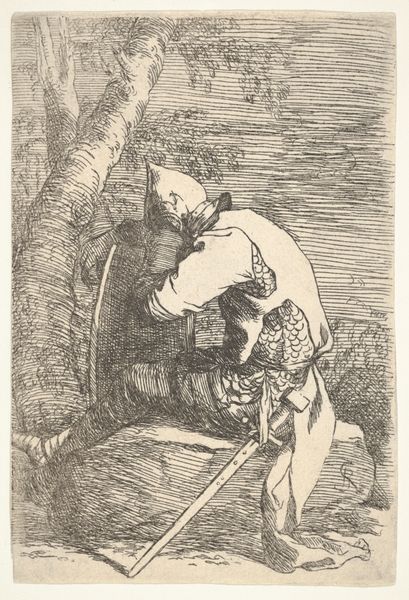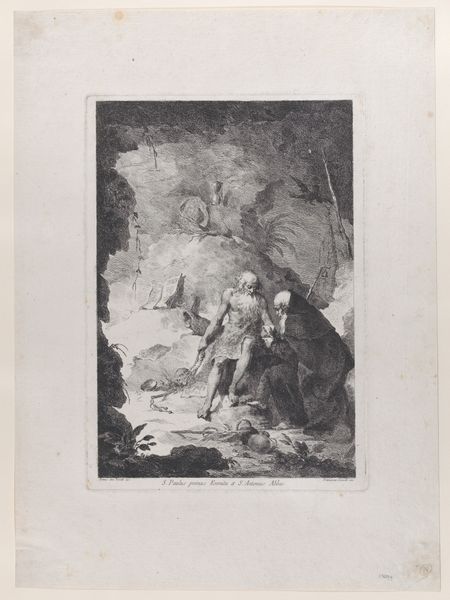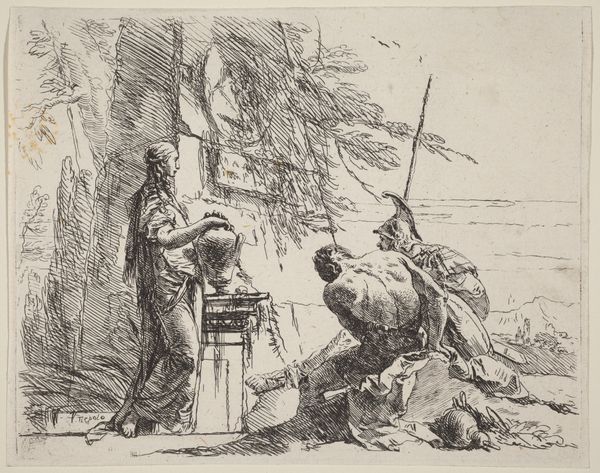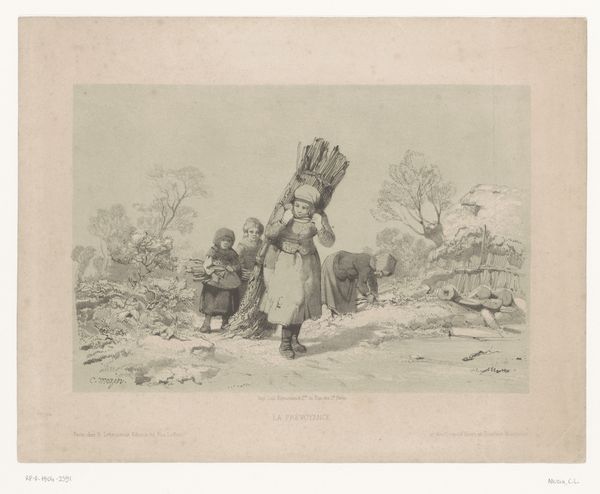
Illustration til "Venskabs-Pagten" i H.C. Andersen, "Eventyr og Historier", Bind 1 1870 - 1873
0:00
0:00
drawing, print, ink
#
drawing
#
comic strip sketch
#
imaginative character sketch
#
light pencil work
#
narrative-art
# print
#
sketch book
#
personal sketchbook
#
ink
#
idea generation sketch
#
sketchwork
#
sketchbook drawing
#
storyboard and sketchbook work
#
sketchbook art
Dimensions: 75 mm (height) x 87 mm (width) (bladmaal)
Editor: This ink and print drawing, “Illustration til "Venskabs-Pagten" i H.C. Andersen, "Eventyr og Historier", Bind 1,” was created by H.P. Hansen between 1870 and 1873. It’s a fairly simple sketch, seemingly illustrating a narrative moment. What catches your eye in this work? Curator: What strikes me is how the printmaking process makes readily available the reproduction of illustration. These readily made images enter a sphere of consumption that is far more ubiquitous than unique artworks. How do you feel this ready-made accessibility affects our reading of it today? Editor: That’s a great point! I hadn’t considered how mass production impacts its cultural relevance now. Does the subject matter of the illustration—figures, landscape, narrative—play a role in its status as a commodity? Curator: Absolutely. Hansen’s illustration is embedded within the framework of Andersen's fairy tales. This means its value isn't solely artistic. Consider how the story informs the material image, adding value for its consumers. How does that interplay between narrative and illustration then feed into its cultural endurance, if at all? Editor: So the enduring appeal of the fairytale makes the image continually relevant? It sounds like there's a connection between artistic creation and consumption, with fairytales adding another layer of cultural meaning to the production. Curator: Exactly. It shifts our focus from aesthetics to function within the system of book production, readership and enduring stories. Editor: That makes me appreciate the piece more. Seeing art as a product shaped by production changes my perception of its role and value. Thanks for broadening my perspective. Curator: Indeed. Examining art through the lens of its production reveals fascinating connections between culture and consumerism.
Comments
No comments
Be the first to comment and join the conversation on the ultimate creative platform.
